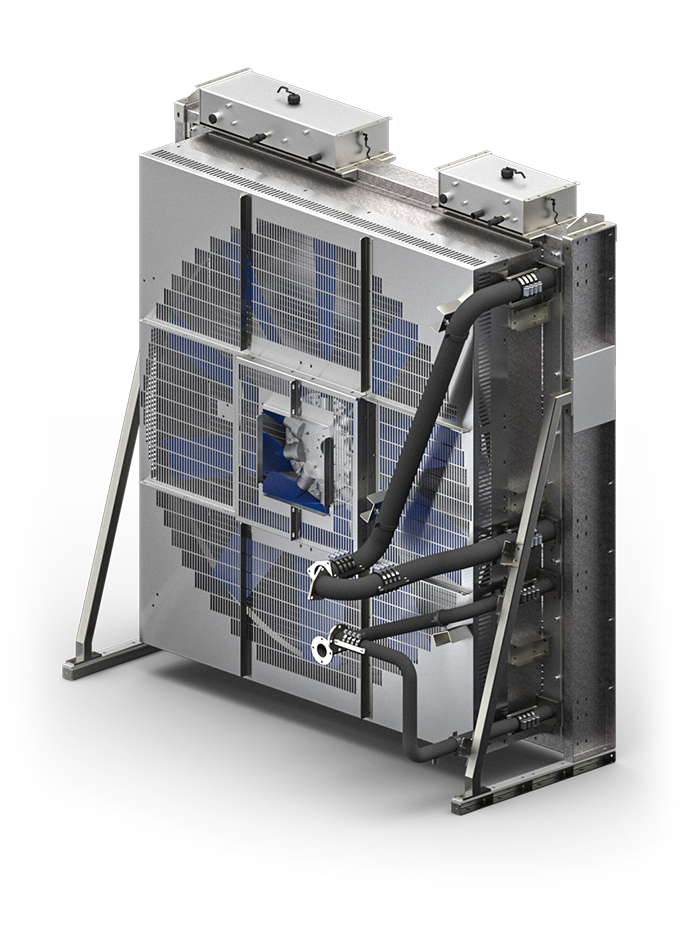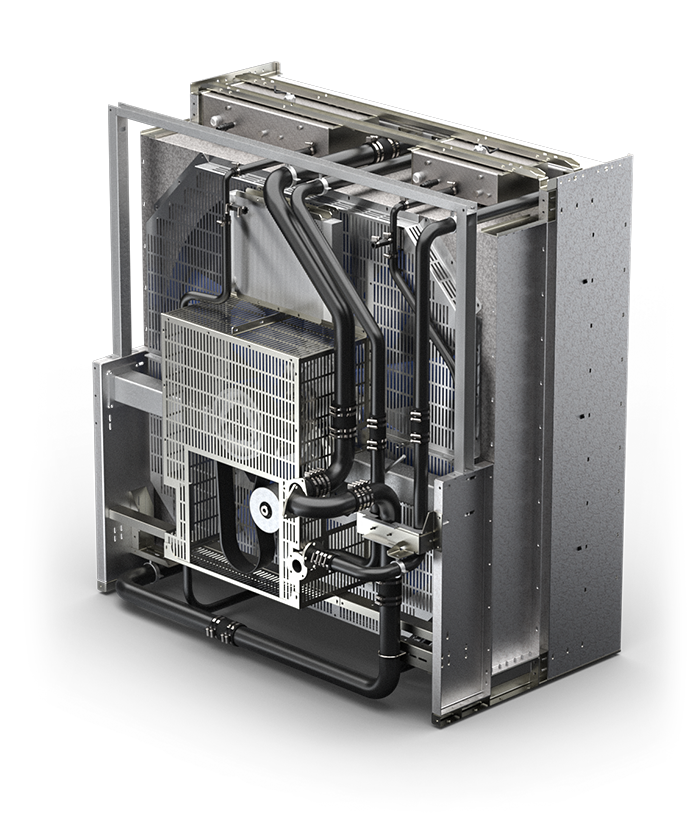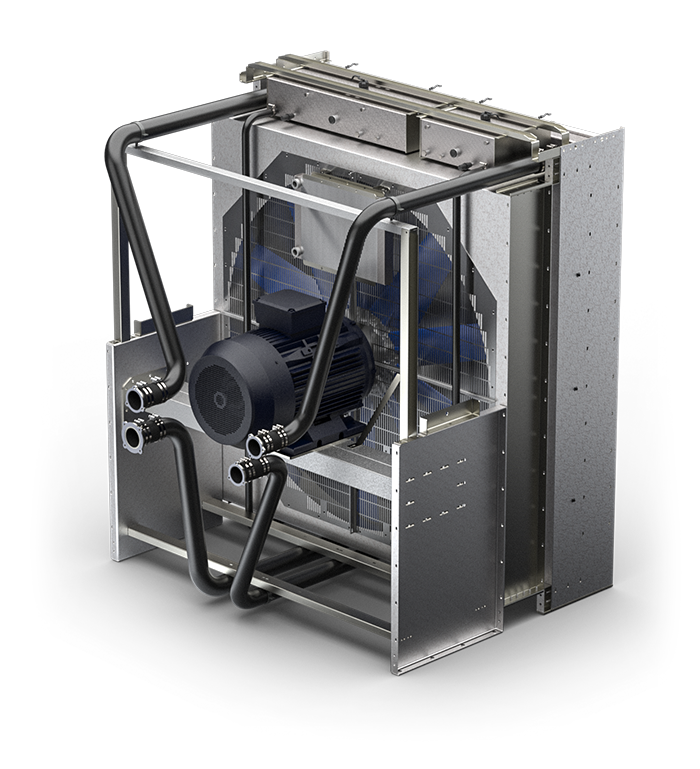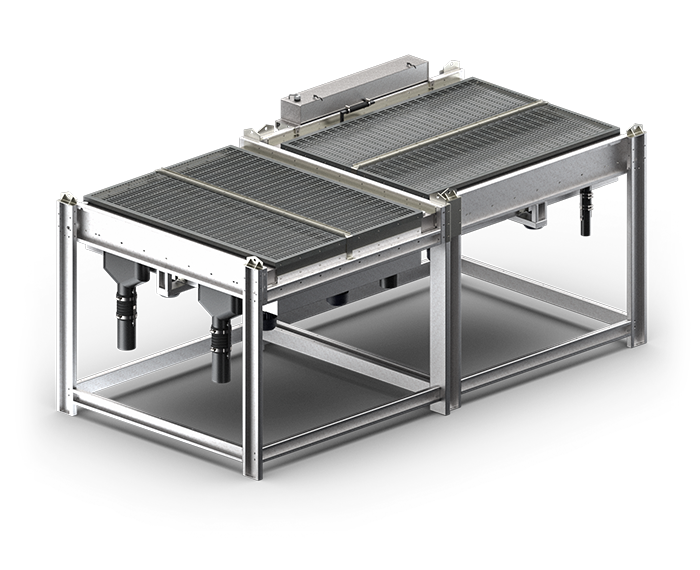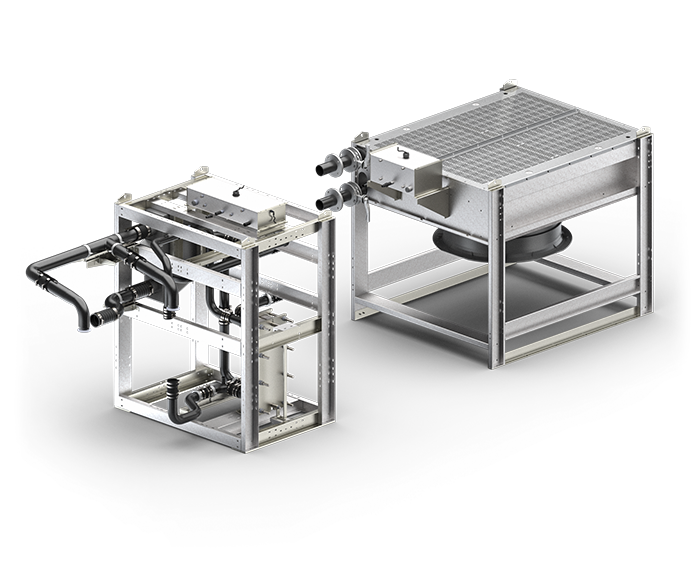RADIATOR ATTACHED DIRECTLY TO THE ENGINE
Wingfan develops and manufactures many types of radiators. With this particular arrangement, the rotation of the fan is directly driven by the engine. It is a mechanical system in which the transmission ratio, both through the belt system and through the gearbox, has to be specified by the manufacturer of the motor itself.
